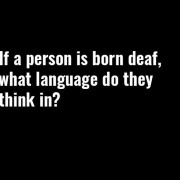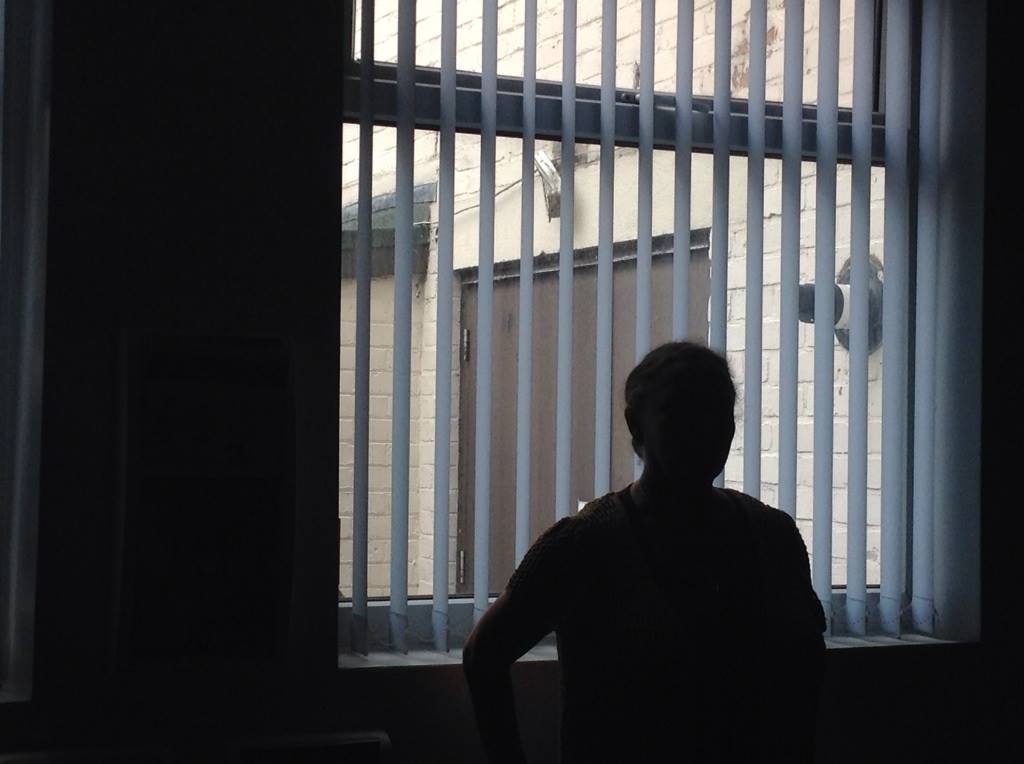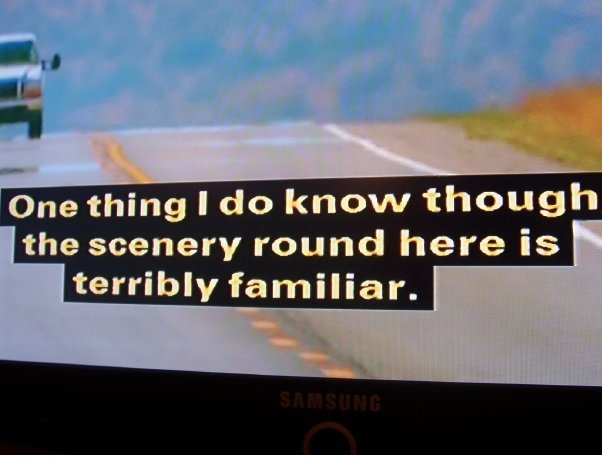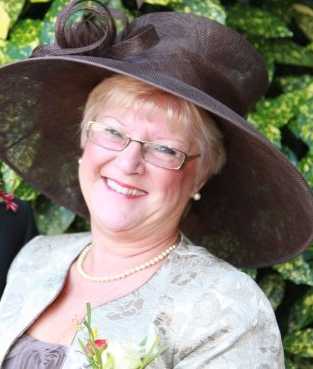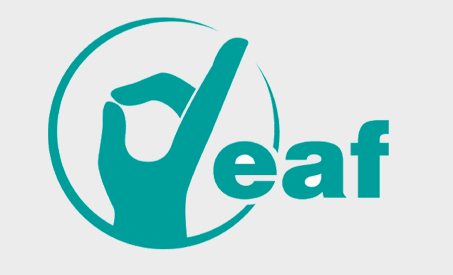Training courses
Our training courses will help your staff to deliver services with a high level of deaf awareness, increasing your customer base and satisfaction ratings, ultimately increasing your turnover. Don’t miss out on an opportunity to develop your staff today with experienced and qualified deaf awareness and equality trainers. Delivered in-house or at a venue, our bespoke courses are tailor-made to meet your requirements.
What employers can learn from a supermarket’s interview mistake
/2 Comments/in Training courses /by Tina LanninUse an appropriate communication service for the deaf interview

When I turned 18 I went on my first job interview. Waitressing at our local restaurant seemed appropriate for a newbie such as myself. I had never been interviewed before. My mom and I role played for hours, trying to cover every conceivable question. On the day of my interview I dressed in my Sunday best and drove to the restaurant.
My heart was beating so loud I barely heard the interviewer introduce himself. His office smelled of furniture polish and oatmeal, the florescent light adding no friendliness to the windowless room. My palms felt clammy and I became very aware of my posture. When the interviewer asked where I saw myself in five years, I blurted out “hopefully not in this room”.
It was an awful experience. My first job interview was awkward and scary. Now, imagine this scenario and you’re deaf. Worse still, imagine going for your first ever job interview and the interviewer didn’t know you were deaf. That’s what happened to James Blake.
James and the Brighton supermarket
James applied for a shelf-stacking job at the Asda branch at Brighton Marina and on Tuesday, 26 July 2016, was invited for an interview. A few minutes after James was called in, the interviewer asked to speak to James’s mom. Apparently they had not reviewed James’s application properly and missed where he had stated that he was deaf.
Unprepared and probably a bit embarrassed, the interviewer carried on with the interview, while Mrs Blake tried her best to act as interpreter. Brighton and Hove News reported that Mrs Blake felt James had been put at a disadvantage because it was difficult to translate the group discussions and have James participate in the exercises.
“I was totally humiliated as James didn’t know what he (the interviewer) had said and felt he was implying James wasn’t making any contributions to the group.”
A few minutes after arriving home, James received an email from Asda letting him know he hadn’t gotten the job. Luckily this story has a happy ending. James was invited for another interview, this time at Sainsbury’s. An interpreter was immediately arranged and James was offered the job two days later.
Deaf interview training
I think we can all agree that such an incident should never have occurred. We presume James’s application was reviewed before he was invited for an interview, and the interviewer should have been prepared. However, we don’t know the full extent of the situation or what happened leading up to the interview.
James is lucky to have such a supportive family and mother, but the experience could easily have crushed the young man’s spirit, discouraging him from applying for future opportunities. The Brighton supermarket received severe criticism, resulting in bad publicity. We encourage all companies and employers to institute training on diversity and disability so that such incidents are less likely to occur.
Be pre-emptive and understand what deaf job hunters might need before publishing a job opening. It’s every employer’s responsibility to give opportunities to deaf candidates. Below are some tips on how to interview a deaf applicant.
Preparing for the deaf interview: Schedule communication support
When scheduling the interview, check with the interviewee if they have any communication preferences and requirements.
- Once you have confirmation of the date and time of the interview, book the type of communication support (e.g. interpreter, captioner or lipspeaker) well in advance. 121 Captions can assist in ensuring interviewees are fully involved with discussions.
- Use a reputable agency for your communication service for the deaf. Review the agency first, see what other users have said about their services.
- Prepare your chosen communication support provider for the deaf person. Provide them with the day’s agenda, a list of questions you’ll be asking candidates, and any supporting material you feel might be useful.
- Have the communication support provider arrive an hour or two before the candidates. Get them set up and settled before the interview(s) starts.
Conducting the deaf interview: Put them at ease
The deaf interviewee will be nervous, perhaps even more so than a hearing candidate. They’re worried how their deafness will be perceived and if they’re communicating clearly enough.
Do’s
- Smile and have a friendly face. Remember your body language is doing a lot of the talking.
- Speak one at a time, making sure to look directly at the deaf person when speaking, even if they have a lip speaker, note taker or captioner in the room.
- Focus on the interviewee, not the communication support provider.
- If you have a beard or moustache, make sure the hard of hearing interviewee is able to understand you.
- Do indicate when another person is speaking, for example: ‘Mr Thompson would now like to ask you a few questions.’
- In the event of a group exercise, make sure the candidate(s) are able to clearly see the speaker and understand the instructions. We suggest having these instructions typed up beforehand.
- Do ask the if you may explain to the group that they’re deaf and what the communication support provider’s role is. They may not want to disclose this.
- If you’re doing telephonic interviews, offer them the options of Skype video, so the deaf candidate can read your lips and see your expressions. Make use of the Skype writing function if video is proving to be difficult.
- Always offer a face-to-face interview with a hard of hearing job hunter.
Don’ts
- Don’t ask them about how they became deaf, focus on their ability to do the job well.
- Don’t ramble. Deaf people are trying to translate what they see, while simultaneously thinking about responding to your question.
- Don’t treat them differently or mock their disability. “I can do most things a hearing person can do – I’m deaf, not daft.” – Tina Lannin.
- Don’t turn away from the deaf interviewee when speaking to them and don’t walk around the room. They’re trying to watch your face and follow your cues.
Conclusion
Deaf people should not be deprived of the opportunity to work merely because your company failed to prepare for the possibility of a deaf interviewee. Ensure your company’s reputation remains in good standing by reviewing each application properly and make appropriate adjustments to put the deaf candidate at ease. Download our free ebook to improve your understanding of deaf and hard of hearing employees, positioning yourself as the employer that cares.
Contact us if you’d like to know more about securing a communication service for the deaf or how your company can help support deaf / hard of hearing candidates and employees.
Help employees with hearing loss unleash their superpowers!
/2 Comments/in Training courses /by Tina Lannin
Wondering how to help an employee with hearing loss? Here are 10 simple and cost-effective ways you can unlock their superpowers and help them thrive at work. Follow these and in return you’ll get a happy and productive employee with a particular set of skills that will be an asset to any team.
- Treat employees with hearing loss as you would do any other employee – with the same high expectations about what they are capable of achieving.
- Make simple adjustments to help them manage their hearing loss. They don’t need to be expensive and can be as simple as talking to them via email rather than the phone, or arranging remote captioning for a conference call.
- Review where they sit. If the office is open plan are they right next to the staff member who talks loudly non-stop? Is the space behind their chair the main thoroughfare for everyone on the floor?
- Keep the team bond strong by involving your employee with hearing loss in all conversations, whether they’re social or work-related. The same goes for impromptu drinks or lunch breaks.
- Give them first choice of chairs in any meetings so they can position themselves best to see and hear everyone.
- Update your meeting etiquette. Circulate an agenda beforehand, and appoint a chair to make sure people speak one at a time. It’s not just those with hearing loss who will benefit.
- If their hearing loss is making meetings really challenging, offer your employee remote captioning. The meeting will be streamed live to your employee’s phone, tablet or laptop plus you’ll all benefit from a real-time transcript emailed afterwards.
- Think health and safety. Does your employee need a pager or flashing light to ‘hear’ the fire alarm?
- Check in with your employee regularly, say at monthly reviews, to ensure they’re managing ok. Some employees with hearing loss don’t feel comfortable asking for more help, but would take it if offered.
- Offer mentoring with someone outside your team who your employee trusts and feels comfortable with. If you don’t have a programme in place, consider using 121 Captions who specialises in supporting employees with hearing loss.
We know that you’ll want to make these changes from the goodness of your heart and out of respect for your employee. But just in case someone else queries why they should change how they work for the sake of an employee with hearing loss, here are the amazing things that a few adjustments can unlock:
- A happy and productive employee.
- A team member whose hearing loss means they are expert at finding solutions to problems.
- A member of staff who is independent, flexible and adaptable and has learnt through hearing loss to take responsibility for themselves.
- Gratitude for the adjustments you continue to make for them, demonstrated through excellent work and loyalty to the organisation.
What one small change could you make today that would cost you nothing, but mean the world to an employee with hearing loss?
Getting the most from the Roger Pen with professional training
/5 Comments/in Training courses /by Tina Lannin
Roger Pen transmitter & 2 receivers (with user’s iPhone and cochlear implant shoes)
Hello, my name’s Lisa Caldwell and I provide professional training on using the Phonak Roger Pen. I work alongside a number of organisations including FM Hearing Systems and 121 Captions. Yesterday I made someone cry. Why? Because, thanks to our training session this lady realised how much benefit she was going to get from the Roger Pen, and the tears were tears of joy. Finally, after months of struggling, she was able to speak to colleagues and customers on her landline and mobile phones. Talk about job satisfaction!
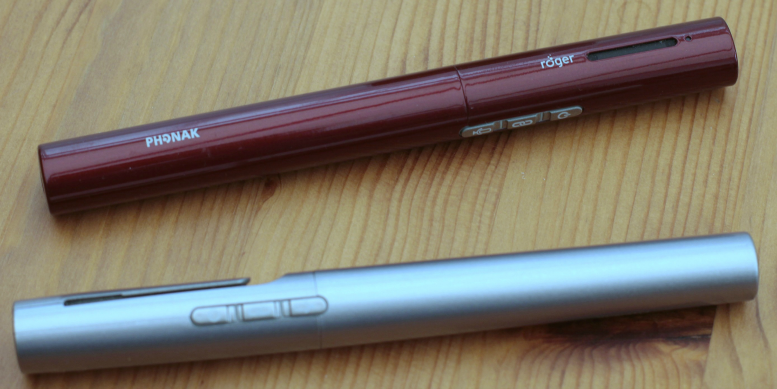
Roger Pen receiver in red and silver
Roger Pen – what’s that?
If you’re not familiar with the Roger Pen, it’s a cutting edge wireless microphone that helps people with hearing loss to understand speech in noise, improves clarity, and makes sounds seem closer – all very useful when you’re struggling to hear! It’s suitable for use at home, in work, and at university and school. In fact I’ve found very few occasions when I can’t use it to improve how I hear.
Training in the workplace and the lecture hall
The training I provide is usually with people who are in work or studying beyond school. Sometimes they are experiencing new challenges with their hearing – for example increased hearing loss or a new role. Other times they have realised the impact their hearing loss is having on their work or studies, and have asked for help from Access to Work or their Disabled Student Allowance (DSA) assessor. And that’s where I come in.
Getting to grips with new technology
Do you remember the first time you got a mobile phone? I can still recall how bewildering the first few weeks were, trying to remember which button did what, and how to get the phone to do what I wanted. The Roger Pen is much less complicated than a mobile, but still it takes a little bit of time to understand how it works, and how best to use it in the situations you’re finding challenging. I wasn’t offered training when I got my Roger Pen a few years ago and I struggled to get the most out of it until someone showed me how it worked. And that’s why many ATW and DSA assessors recommend professional training as part of their assessment report.
Professional training for your specific challenges
The training I provide takes place where you work or study. As well as explaining in detail how the Roger Pen operates, I also problem-solve around your specific issues, so you know the best way to use the Pen to get the help you need. It’s personal and interactive, and I don’t leave until you’re satisfied there’s nothing else you need to know.
Find out more
If you’d like to find out more about training on the Roger Pen you can contact me on lisa@thehearingcoach.co.uk
121 Captions offers a range of training programs for both people struggling with hearing loss, and organisations wanting to provide accessible services and employment. For more details visit our training page.
 Lisa Caldwell works freelance as an accredited Phonak Roger Pen trainer. You can catch up with her at lisa@thehearingcoach.co.uk
Lisa Caldwell works freelance as an accredited Phonak Roger Pen trainer. You can catch up with her at lisa@thehearingcoach.co.uk
Training your company to be more deaf aware
/0 Comments/in Training courses /by Tina Lannin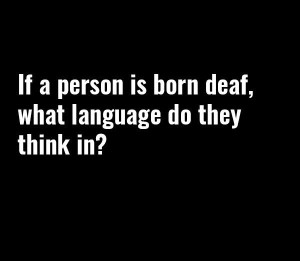
So, you’ve been assessed by Access to Work, you’ve got any equipment you need, and you’re loving the live captioning we provide. Everything’s hunky dory right?
Hmm, not quite…
A lot of our clients tell us they wish there was some way of training everyone they work with to understand more about hearing loss, and the impact it has on employees like themselves.
Well there is!
We provide deaf awareness training courses that not only help your colleagues understand your experience, but also help them communicate more effectively with any clients or customers with hearing loss.
The trainer skilfully introduced us to the deaf world, showing us the difficulties and also the amazing skill of deaf people as they communicate through lipreading, signing and concentrated hearing. My awareness went from a 3 to a 10! Great course.
– HM Revenue & Customs
Unlike a lot of other deaf awareness courses available, we don’t work on the assumption that all deaf people use British Sign Language (BSL). As an organisation that is deaf-owned and deaf-led we know that, in reality, 99% of people with hearing loss do not use BSL as their first language. That’s why our trainers are native English speakers, and also why we emphasise that organisations need to think beyond BSL when asked to provide communications support.
We can tailor all of our training courses specifically for your organisation, and can include you in them to help educate your colleagues on your personal experience of working in your organisation.
Training with 121 Captions
Here are a couple of examples of the training we offer;
Deaf awareness training
(full day or half day)
Aim: to enhance the awareness and knowledge of issues around deafness and hearing loss.
Objectives:
- To increase the understanding of communication needs for people with different levels of hearing loss.
- To look at the ways in which people respond to losing their hearing (this is where you could really help), and how we respond to people with hearing loss.
Your colleagues will be able to try out hearing aids, practise lipreading exercises and learn the two-handed BSL alphabet (also known as fingerspelling).
To find out more about our training courses contact us.
Communicating with deaf and hard of hearing people
(we recommend half day)
Aim: to help your organisation understand the best practice for communicating with deaf people, and so avoid loss of business or staff.
Objectives:
- To help your colleagues understand the challenges deafness causes to a person’s life.
- To explore communication choices available to deaf people.
- To review hearing aids, induction loops and cochlear implants.
- To discuss and practise lipreading and communication tactics.
All our training courses are provided by qualified trainers who provide training from the perspective of the organisation, their employees and their potential customers.
To find out more about how our training courses could help your organisation, contact us.
Sign up here for your free e-Book, The Ultimate Guide to Running Successful Events for Deaf People, for HR Professionals. Simply enter your email address and your e-Book will be sent to you.
Deaf awareness & communication tactics
/0 Comments/in Training courses /by Tina LanninLearning outcomes of a deaf awareness and communication tactics training session
There are 360 million deaf people in the world. It makes business sense to be aware. At the end of a typical deaf awareness training session, you will be able to;
- Understand the diversity of deafness.
- Understand the numbers of deaf people in the UK.
- Understand a range of communication tactics used by deaf people.
- Describe a range of environmental and other factors that can affect communication.
- Understand the factors that affect the deaf person’s choice of language and communication tactics.
- Define discrimination and list the barriers to communication and information commonly experienced by deaf people.
- Understand how these barriers can be overcome through technological aids and personal knowledge.
- Experience different forms of communication support and know how to arrange a booking.
- Carry out a conversation with a deaf person using clear speech and communication tactics.
To find out more about our training courses or to book a place, contact us
Get training in deaf blind awareness
/0 Comments/in Training courses /by Tina LanninSally, one of our expert deaf and deaf blind awareness trainers, gave us an insight into the valuable work she does. She is always telling people they should get training from her, and we’ve brought her out to say hello!
We work as a team all around the UK, delivering both deaf awareness and communication skills training for everyone from the young to the old, the professionals to the man in the street. Everyone who works with people should get training in communication skills.
Why should you get training in deaf blind awareness?
Last week, we ran a deaf blind awareness day, training a mixture of older people, visually impaired people, deaf and hearing. The aim was to encourage people to volunteer to become “buddies” for those who are isolated in their own homes due to age related deaf blindness. We also found that the information is useful for those who are just coming out and learning how to deal with deafness and don’t know where or how to get training that is appropriate for them.
How does deaf blind awareness training help?
This particular group of older deaf blind people are not as well known as they should be. You can’t hear so well, and you can’t see so well, they need support in maintaining independence and living a meaningful life. They don’t need pity – they need someone to go round to support them with their mail, perhaps go shopping, have a chat or even someone to guide them to the local pub. Deaf blindness means you have issues with access to information, communication and mobility. Life doesn’t stop when you become deaf blind.
Many people think it’s impossible to talk to deaf blind people; this isn’t true. There are so many tactics to use and learn, and we teach these in our deaf blind courses. In fact, what’s suitable for older deaf blind people is also very suitable for older (and younger!) deaf people too. When you attend one of our courses, you will wonder why you didn’t get training in this area before as it’s so useful.
How common is deaf blindness?
Let’s have a quick look at the statistics, before we go further…
55% of people over 60 years old are deaf or hard of hearing. That’s about 8-9 million in the UK, and of these, half will be struggling with getting accustomed to hearing aids, and the other half will have given up, shoved them in a drawer or not even taken any steps to have a hearing test.
Of this age group, 1 in 6 will also have a visual impairment.
It is more likely people will go to the local charities dealing with blindness; there is nowhere to go if you are deaf. (unless you know of a great lipreading class down the road, and have enough money to pay for it!)
So here we were delivering this training. They did a survey of all their 1800 members who were visually impaired. The results were astonishing, 1200 of them admitted to having a hearing loss on top of the visual impairment. This means, statistically, there could be as many as 5 million older people with acquired age related deaf blindness.
Why get training with 121 Captions?
Our courses are different. We don’t just talk about our rich life experiences of being deaf and being discriminated against daily, we talk about solutions, ideas, and challenging stereotypes leading to this taboo subject of deafness, especially among those who have become deaf after being a hearing person all their lives. We also put you in our shoes, let you have a listen to what it’s like when using a hearing aid, how the environment can affect communication – and of course we let you have a go at finding out about lipreading, why it’s difficult, and how important it is for family, friends and colleagues to understand why some deaf people hide their deafness. You’ll come away with a whole new understanding of deafness, and deaf blindness – and gain some valuable communication skills as well. To date, the feedback from the deaf blind awareness training has been mind-blowing.
If you would like to know more about all the different courses we offer, contact us about our bespoke training courses.
35 misconceptions about being deaf or hard of hearing
/2 Comments/in Training courses /by Tina LanninHearing loss is no joke
Here are some misconceptions about deafness, deafblindness, and communication that we have come across in our training courses. Some of them may be obvious, others not. If you can answer all of these, then congratulations – you are halfway to becoming deaf aware and knowledgeable about deafness. If not, then perhaps it would be a good idea to come and find out more on a training course with 121 Captions to learn what deafness really means. After all, 10 million people in the UK and 360 million people in the world struggle with some degree of hearing loss.
Test your assumptions about hearing loss
The most common misconceptions are highlighted in bold.
- All people with a hearing loss use sign language
- A hearing aid makes you hear normally, all deaf people have one – or a cochlear implant
- Deaf people cannot speak or speak funny
- A cochlear implant restores hearing
- All people with a hearing loss lipread
- All deaf people use interpreters
- There are no deafblind people round here
- Deafblind people can’t get out and about
- Deafblind people cannot communicate, deafblindness means you cannot see or hear at all
- Presbyacusis only affects older people
- Everyone with a hearing loss can use a telephone with a hearing aid or cochlear implant
- A loop system is suitable for all people with a hearing loss who do not sign
- Hearing Dogs can respond to all noises
- Hard of hearing people are all old
- Hard of hearing people do not have the same problems as deaf people
- A person with a hearing loss will understand you better if you shout
- I don’t need to make my business accessible – I have no deaf customers
- Deaf people don’t want to talk to me, I couldn’t communicate with them anyway, I would have to learn sign language to do so.
- A hearing aid user or a cochlear implant user can hear me if I shout their name across a crowded room
- Hearing impaired people only hear (or see) what they want to” hear”, I think they’re pretending not to understand me
- You must use simple English when talking to a person with hearing loss
- A sign language user cannot read subtitles
- Deafblind people cannot go out by themselves
- Deaf people do not lose any more hearing
- People with hearing loss are not allowed to drive
- Deaf people are not as intelligent as hearing people
- All people with hearing loss want to be hearing
- Most deaf people have deaf parents
- All hearing impaired people can communicate with each other
- All hearing impaired people understand deaf culture
- BSL (British Sign language) is the same as ASL (American Sign Language) and AUSLAN (Australian Sign Language).
- Sign language is a collection of gestures similar to mime
- Sign language users do not have cochlear implants
- People with a hearing loss bring their own interpreters with them
- Deafness won’t happen to me.
To find out more about our bespoke training courses, contact us.





